When it comes to health, protein matters more than you might think. It’s essential for muscle repair, feeling strong, and supporting everyday wellness. Many people ask which food is the best source of high quality protein, especially with so many options out there.
You’ll find both plant-based and animal-based foods on the list, each with unique benefits. In this article, you’ll get a clear comparison, so you can make the best choice for your own nutrition and goals. Curious about how different options stack up, including plant-based protein sources? Let’s find the answer that fits your lifestyle.
What Makes a Protein High Quality?
When trying to figure out which food is the best source of high quality protein, there are a few key features that matter most. Not all protein is created equal. Some sources do a much better job at giving your body what it actually needs for muscle repair, immune health, and daily energy. Let’s break down what sets high quality protein apart.
Complete Amino Acid Profile
Proteins are made up of building blocks called amino acids. Out of the 20 total amino acids, your body can only produce 11 on its own. The other 9 are called essential amino acids, and you have to get them through your diet.
A high quality protein source contains all nine essential amino acids in the right amounts. Foods that tick this box include:
- Eggs
- Meat and poultry
- Fish
- Dairy products
- Soy and quinoa (for plant-based options)
If a protein is missing even one essential amino acid, it’s considered incomplete and must be paired with other foods to round things out. This is especially common with many plant-based proteins. If you’re curious about how to combine foods for better nutrition, check out different protein-rich plant based cookbook for ideas.
Bioavailability: How Well Your Body Can Use It
It’s not just what’s in your food that counts—it’s also about how well your body can absorb and use those nutrients. Bioavailability measures how efficiently the body turns the protein you eat into the protein your muscles and cells need.
Animal-based proteins like chicken, fish, eggs, and dairy generally score highest for bioavailability. Your body can use almost all the amino acids from these foods. Plant-based options may contain fiber or other natural substances that slow absorption, but combining different plants can boost overall bioavailability.
Digestibility: Easy on Your System
For protein to do its job, your body needs to digest it well. The digestibility of a food is about how much protein your body can actually break down and use. Some foods break down quickly and give you faster access to amino acids. Others take longer and might not break down completely.
Here’s a quick look at how digestibility compares:
- Eggs and dairy: Highest digestibility
- Lean meats and fish: Very high digestibility
- Beans, legumes, and grains: Lower, but better when cooked or mixed together
If your body struggles to digest certain foods, you might not be getting all the benefits. Pay attention to how you feel after eating different types of protein.
Why These Factors Matter
Getting enough high quality protein means more than simply hitting a number of grams each day. Your body operates best when it has all the essential amino acids, can absorb them efficiently, and digests them well. This helps you repair muscles, maintain healthy skin and hair, and keep your immune system running strong.
By focusing on sources that deliver on all three factors, you’ll be on the right path to meeting your health goals, whether you’re active, managing weight, or simply want to feel your best every day.
Animal-Based Protein Sources: Pros, Cons, and Top Choices
Animal-based protein holds a top spot when people ask which food is the best source of high quality protein. These foods offer a strong balance of amino acids, support muscle health, and keep you energized through the day. Let’s break down the details, so you can see both the benefits and potential drawbacks of these sources, as well as the best options available.
What Makes Animal-Based Protein Stand Out?
Animal-based proteins, like chicken, fish, dairy, and eggs, are known for being complete proteins. This means they give your body all nine essential amino acids in the amounts you need. These foods also tend to rank high in both bioavailability and digestibility, so your body makes good use of every gram.
You don’t need to stress about food pairing because each animal-based option stands on its own nutritionally. These benefits make them popular for athletes, active folks, or anyone looking to build or maintain lean muscle.
The Pros of Animal Protein
Including animal-based proteins offers some clear advantages:
- Complete amino acid profile for dependable muscle repair and energy.
- High bioavailability for maximum absorption.
- Variety of sources to fit your taste and budget.
- Helps with satiety so you feel fuller for longer.
- Supports bone health due to natural levels of calcium and nutrients.
The Cons of Animal Protein
As with anything, moderation is important. Some downsides include:
- Higher in saturated fats in some options, such as fatty cuts of meat or some cheeses.
- Some sources are higher in cholesterol (like egg yolks and red meat).
- Ethical or environmental concerns with some conventional production methods.
- Can be pricier than plant-based picks, depending on the cut or quality.
If you notice tiredness or weakness when you cut out or lower your animal-based protein intake, it’s wise to learn about the early signs of protein deficiency so you can adjust your diet.
Top Animal-Based Protein Choices Compared
With so many animal protein options available, knowing which fit your goals and preferences makes things easier. Here’s how some of the most popular sources compare:
1. Chicken Breast
- Lean, low in saturated fat, high in protein.
- About 26 grams of protein per 3-ounce serving.
- Easy to add to salads or grain bowls.
2. Eggs
- One of the most bioavailable proteins.
- Each large egg supplies about 6 grams of high quality protein.
- Contains healthy fats and essential vitamins.
- Affordable and versatile—think omelets, salads, or even with toast.
3. Fish
- Excellent source of lean protein and heart-healthy omega-3 fats.
- Salmon, tuna, and cod are standouts.
- Around 20-25 grams of protein in a 3-ounce portion.
- Supports brain and heart health.
4. Turkey
- Very lean, low in calories, and packed with protein.
- Close to 25 grams of protein per 3-ounce serving.
- Works well for meal prep.
5. Dairy (Greek Yogurt, Milk, Cheese)
- Delivers protein plus calcium for bones.
- Greek yogurt: about 10 grams per 100 grams.
- Milk: 8 grams per cup.
- Cheese varies, but cheddar has about 7 grams per ounce.
Choosing the Best Animal Protein for Your Needs
Choosing which food is the best source of high quality protein often depends on taste, health needs, and dietary restrictions. Chicken breast is great for lean muscle, fish brings added heart benefits, dairy helps with bone strength, and eggs are accessible and budget-friendly.
Mixing up your animal-based choices can help you avoid boredom and nutritional gaps, making your healthy eating plan sustainable. Pay attention to preparation methods, too, grilled or baked is usually better than fried.
If you’re considering moving toward more plant-based eating, or want to balance your meals, there’s helpful advice for meal planning in the plant-based diet meal plan for beginners guide.
Animal-based proteins deliver on the promise of high quality protein thanks to their amino acid profile and digestibility. But variety, balance, and your individual needs should guide your plate.
Plant-Based Protein Sources: Can They Compete?
Plant-based proteins have become more common on dinner plates, lunch bowls, and even quick snacks. With more people exploring plant-forward diets, it’s logical to wonder if these foods really compete with animal-based proteins for quality. Let’s look at how plant-based options measure up—in terms of absorption, amino acids, and overall health benefits—using clear scientific findings and advice from nutritionists.
Comparing Animal-Based and Plant-Based Proteins for Quality
Absorption, also called bioavailability, is front and center in the discussion about which food is the best source of high quality protein. While animal proteins are known for being easily digested and absorbed, most plant proteins follow a different path. Many plant foods contain natural compounds like fiber and phytates, which can slow digestion. This sounds like a problem, but it actually helps keep you feeling full—great for anyone managing weight.
Amino acid profiles also tell part of the story. Animal proteins are complete—they pack all nine essential amino acids in the right balance, making them efficient for muscle repair and growth. Plants are a bit more varied. For example:
- Soy, quinoa, and buckwheat are complete plant-based proteins, rare exceptions among their plant peers.
- Beans, lentils, nuts, seeds, and whole grains often lack one or more essential amino acids if eaten alone.
Nutritionists recommend combining foods to fill in these gaps, a method called protein combining. Pairing rice with beans, or hummus (chickpeas and tahini) with whole wheat pita, creates a complete profile over the course of the day. Contrary to old advice, you don’t need to eat these combinations at a single meal. As long as you’re mixing up your plant choices day-to-day, your body will store and use what it needs efficiently.
Here are top plant-based protein sources you can turn to:
- Lentils and beans: Packed with protein, fiber, and helpful minerals. For example, 1 cup of cooked lentils has about 18 grams of protein.
- Tofu and tempeh: Made from soybeans, both are complete proteins. Tofu is more flexible in recipes, while tempeh brings a richer flavor and extra probiotics.
- Quinoa: Technically a seed, not a grain—complete with all essential amino acids.
- Chickpeas and peas: Great for salads and spreads, with solid protein content and a mild taste.
- Nuts and seeds: Almonds, peanuts, chia, and pumpkin seeds bring healthy fats along with protein.
Plant-based proteins may not always provide as much iron or B12 as animal sources, so paying attention to variety and whole foods in your meals is important. For those trying plant-focused eating, it’s smart to plan meals and snacks with these differences in mind.
Current research: Studies have shown that people meeting their needs through plant proteins get similar muscle-building and weight-management results when their diets are balanced. Dietitians agree—what matters is overall protein intake across the week, not just at a single meal.
Some added perks with plant-based eating? Lower cholesterol, reduced saturated fat intake, and support for heart and gut health. For those eating out, plant-filled menu items often help you stick to your nutrition plan, especially when you use simple healthy eating out tips.
Plant-based proteins aren’t just backup options anymore. With smart combinations and a focus on variety, they easily compete with animal sources for quality and health benefits, especially if you’re aiming for plant-forward meals as part of a balanced lifestyle.
How to Choose the Best Source of High Quality Protein for Your Diet
Choosing which food is the best source of high quality protein isn’t just about picking what has the most grams on a label. Each person brings different health goals, taste preferences, and beliefs to the table. The right protein source should fit your body’s needs, work with your lifestyle, and align with any personal values or sensitivities. Let’s take a closer look at how factors like allergies, ethics, and the environment can guide this important decision.
Special Considerations: Allergies, Ethics, and Environmental Impact
Several key points shape the search for the best protein source. Your body’s unique needs, your personal beliefs, and your desire to support a healthier world all play a role.
Food Allergies: Staying Safe Without Sacrificing Nutrition
Allergies can make certain proteins risky or off-limits. If you have a dairy allergy, traditional sources like milk, yogurt, and cheese are out. For those allergic to soy or nuts, many go-to plant proteins (like tofu, tempeh, edamame, peanuts, or almonds) can be dangerous.
When steering clear of allergens, variety is your best friend. Eggs, poultry, fish, and some seeds, like pumpkin or sunflower, are often safe swaps when dairy or soy isn’t safe. If plant proteins are important to you but soy isn’t an option, lentils, chickpeas, and quinoa offer safe and complete nutrition when mixed and matched.
People with gluten sensitivity or celiac should avoid some plant-based alternatives containing vital wheat gluten. Always check ingredient lists on processed items like protein bars and meat substitutes.
Ethics: Animal Welfare and Personal Beliefs
Ethics often guide which food is the best source of high quality protein for many people. Some choose plant-based options because of animal welfare, while others balance their diet by choosing eggs or dairy from local farms with strong animal care practices. Others adopt vegetarian or vegan lifestyles, seeking only plant-based proteins.
If animal welfare is a priority, look for labels like “pasture-raised,” “organic,” or “certified humane” when buying animal products. These are usually produced under higher welfare standards, though they can cost more. For strict plant-based eaters, protein-rich foods such as lentils, beans, peas, quinoa, and seeds provide a compassionate path to a nutritious diet.
Ethical eating is a personal journey. The best protein choice often reflects your core beliefs as much as your nutritional needs.
Environmental Sustainability: Eating for a Healthier Planet
Environmental concerns also influence which food is the best source of high quality protein. Large-scale meat and dairy production use vast resources and contribute to greenhouse gas emissions. Reducing animal protein, even a few meals each week, can make a noticeable difference for the planet.
Plant-based proteins like lentils, chickpeas, and peas require far less water and land than beef or pork. Even swapping red meat for chicken or fish can lower your environmental footprint. For those who want a practical way to start, replacing some animal protein with plant-based sources is a simple and effective way to support sustainability.
Looking for more ways to eat healthy and do your part for the planet? Swapping in beans, nuts, and whole grains can support your protein goals while keeping meals interesting and eco-friendly. Explore more healthy food ideas for tips that work for both your body and the planet.
By thinking about allergies, values, and sustainability, you can confidently answer which food is the best source of high quality protein for you. There’s no single answer that fits everyone, but with some reflection and awareness, you’ll find options that support your health and your beliefs.
Conclusion
The answer to which food is the best source of high quality protein depends on what matters most for your body, values, and lifestyle. Animal-based choices like eggs, chicken, and fish top the list for their complete amino acid profile and easy absorption, making them a simple pick for those focused on muscle support and recovery. On the other hand, plant-based options such as lentils, tofu, and quinoa offer plenty of benefits, especially when you combine different sources to cover all essential amino acids.
No single food works for everyone, so trust your preferences and health goals. Mix your protein sources, stay mindful of your nutrition needs, and pick options that fit your beliefs or sensitivities. If you want extra ideas to get more out of your meals, explore the health benefits of quinoa for another versatile and complete plant-based protein.
Share your favorite protein sources or tips in the comments. Your choices today build the foundation for energy and strength tomorrow—there’s no one-size-fits-all, only what makes you feel your healthiest. Thanks for reading and supporting your well-being one meal at a time.
FAQ:
What foods give the highest quality protein?
Animal-based foods like eggs, chicken breast, fish, lean beef, turkey, and dairy (like Greek yogurt and cottage cheese) give the best quality protein. These foods have all the essential amino acids your body needs. Plant-based options like soy, quinoa, and buckwheat also pack high quality protein.
Why are eggs called a top source of protein?
Eggs have all nine essential amino acids in a form your body can use easily. They’re also affordable, easy to cook, and versatile. One large egg has about six grams of protein.
Is chicken a better protein source than beef?
Chicken breast gives a lot of protein with less fat compared to fattier cuts of beef. Lean beef has a bit more iron and vitamin B12, but both types of meat offer complete protein. The best choice depends on your diet needs and taste.
Can you get high quality protein from plants?
Yes, some plants have high quality protein. Soy and quinoa score high because they have all the essential amino acids. Beans, lentils, nuts, and seeds are also good, but you might need to mix them to get the right balance.
How much protein do I need each day?
Most adults need about 0.8 grams per kilogram of body weight daily. If you’re active or trying to gain muscle, you might need more, around 1.2 to 2 grams per kilogram.
What’s the difference between complete and incomplete proteins?
Complete proteins give you all nine essential amino acids. These come mainly from animal foods and some plants like soy and quinoa. Incomplete proteins have some, but not all, essential amino acids and are usually found in most plant foods.
Are protein powders a good source of high quality protein?
Whey and casein, which come from milk, are high quality and popular in powders. Plant-based protein powders (like pea or soy) can also be high quality, especially if mixed to cover all amino acids. Whole foods are usually the better choice, but powders offer a quick fix for busy days.
Is fish a good source of high quality protein?
Fish like salmon, tuna, and cod are excellent protein sources. They give you all essential amino acids, plus healthy fats. Grilled or baked fish is best for keeping the meal low in extra calories.
How does Greek yogurt compare to other dairy?
Greek yogurt has more protein per serving than regular yogurt and most cheeses. It’s a great choice for snacks or breakfast, and it’s easy to add fruit, nuts, or seeds for extra nutrition.
Should I eat a mix of protein sources?
Eating a mix gives you a broader range of nutrients and helps keep your meals interesting. Combining animal and plant proteins can boost your intake of vitamins, minerals, and healthy fats.
Looking for ways to add more high quality protein to your meals? Try adding an egg at breakfast or a serving of Greek yogurt with fruit, or swap in grilled chicken or baked salmon at dinner. What’s your favorite way to include protein in your diet?


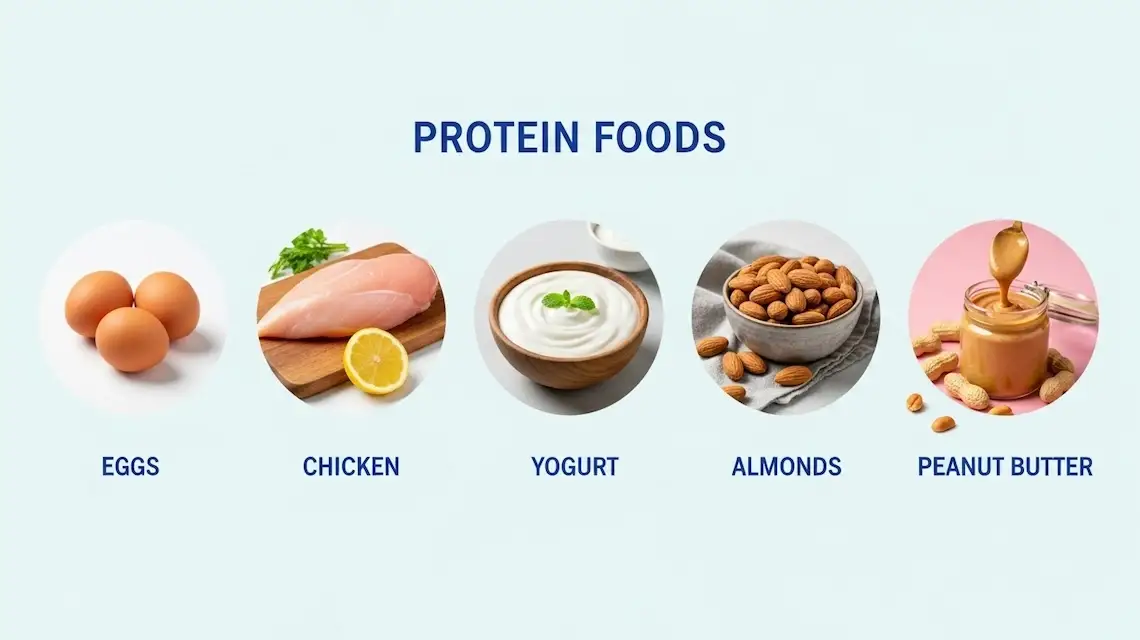
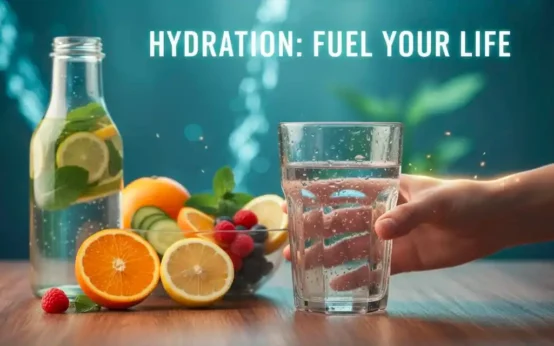 Importance of Hydration for Your Brain, Body, and Everyday Energy
Importance of Hydration for Your Brain, Body, and Everyday Energy 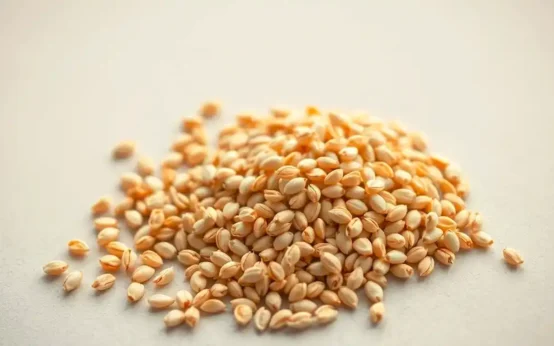 Health Benefit of Sesame Seed
Health Benefit of Sesame Seed  Healthiest Breakfast Cereal for Children
Healthiest Breakfast Cereal for Children  Anxiety Management Techniques
Anxiety Management Techniques 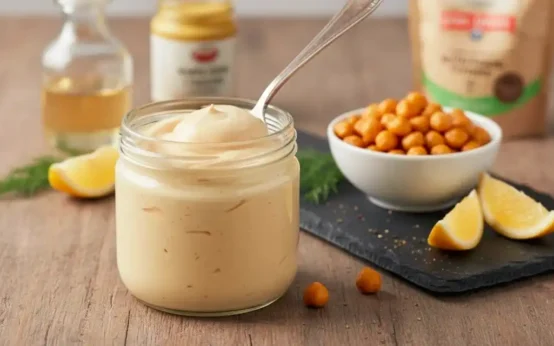 Vegan Oil Free Mayonnaise Recipe
Vegan Oil Free Mayonnaise Recipe 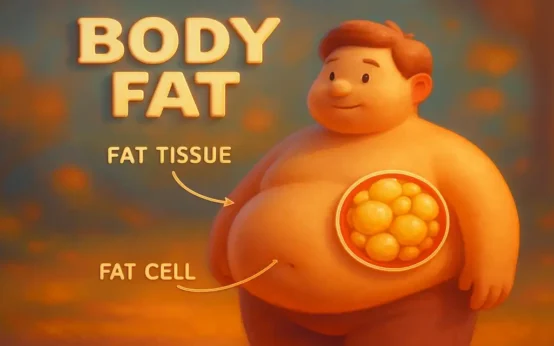 What Makes Fat in Our Body?
What Makes Fat in Our Body?